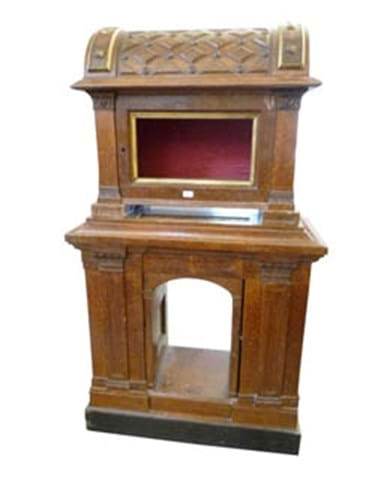
The sober display piece that sold back in September is one of a set of four made for William Beckford (1760-1844) to show off some of his most luxurious small works of art at Lansdown Tower in Bath.
Beckford moved to Bath following the sale of Fonthill Abbey and its contents in 1823 to pay his accumulated debts. As shown in one of a series of interior views of the neo-Renaissance Lansdown Tower, drawn after Beckford's death in 1844, the four cabinets were placed on stands in the Scarlet Drawing Room to house highlights from a re-growing art collection.
Designed with the input of the Bath architect Henry Edmund Goodridge between 1831 and 1841, they employ a number of art historical references. Their form is derived from a Roman sarcophagus, the tops evoke an Italian Renaissance door, while the arched ends quote directly from Santa Maria della Grazie in Milan.
They were probably sold when Lansdown Tower and its contents were sold by Bath auctioneers English and Son in November 1845.
Prior to the appearance of Sworders' sleeper, the only known survivor was a coffer (minus its stand) that was acquired by the Victoria and Albert Museum from London dealer H. Blairman & Son in 2006. The purchase price of Mr Beckford's Treasure Chest, was £125,000.
Quite how the new discovery emerged in Essex is anyone's guess.
Guy Schooling at Sworders, still smarting from his oversight (although relieved it had not sold within its £300-500 estimate at the sale on September 22), told ATG it had been acquired by the vendor only a week earlier at a saleroom in Epping for £100.
The consignor had been content to learn he might make a small profit, but had asked that it be sold without reserve because, under no circumstances did he want it back.
By Roland Arkell




